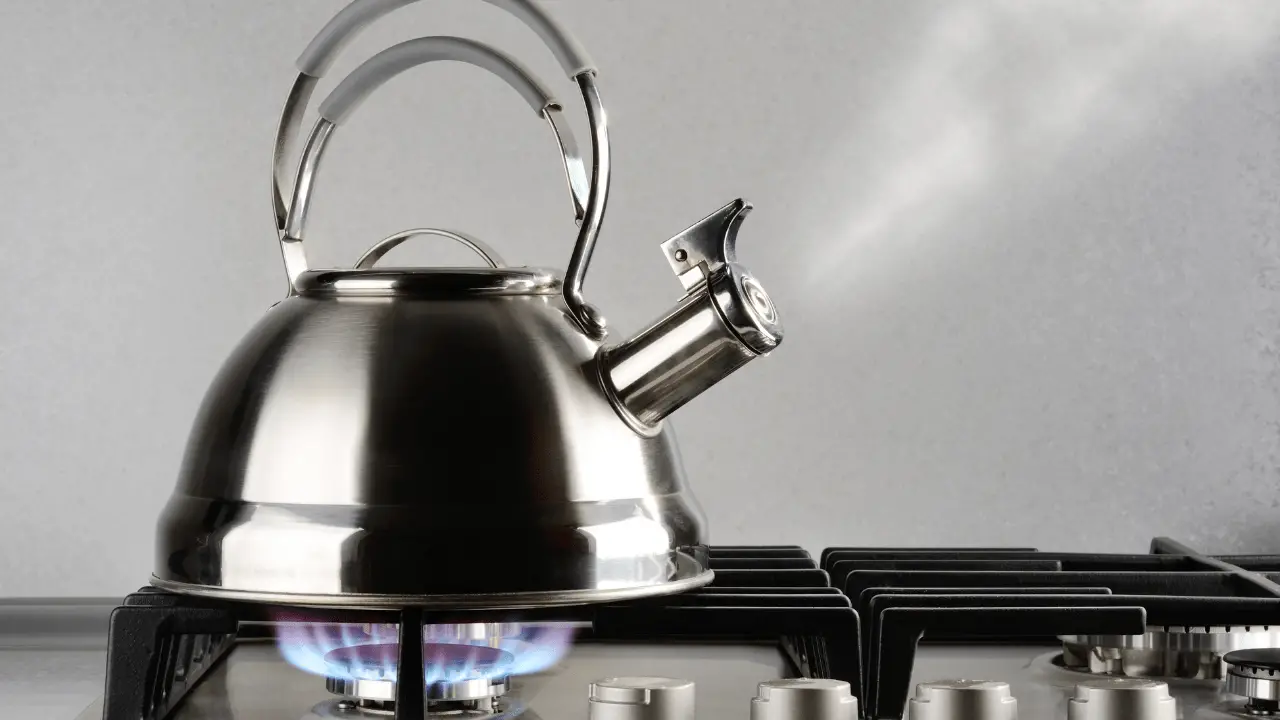Sometimes, even in the summer months, where many places are humid, the air inside can still get so dry that we and other things benefit from adding moisture to it. Although there are many low-cost models of portable humidifiers available on the market, purchasing and using them is not the only way you can add moisture to your indoor environment.
You can use a kettle as a humidifier. When filled with water and heated to boiling, the kettle will put out steam, which turns to vapor, adding moisture to the air. Boiling a kettle of water can supplement several other ways of adding moisture to our indoor environment when needed.
This article will discuss how using a kettle can help increase indoor humidity and help moisturize health benefits. Information on the limitations and drawbacks of using a kettle as a humidifier and opinions on adding moisture to the environment without having to purchase a portable manufactured unit is also included.
Why Use Any Humidifier At All?
If the indoor air becomes too dry, usually from running central heat in the winter and air conditioning in the summer, our skin and mucous membranes can suffer from a lack of moisture.
According to Horticulture Magazine, plants don’t do well in air that is too dry either, nor do some of our wood floors, furniture, or wallpapers.
In order to prevent health and other problems from too little moisture, the humidity level should be between 30% and 50%. At least one source would add that it’s important to keep the humidity level above 35%, but below 55 % to keep static electricity from harming your computers.
How to Use Kettles to Help Moisturize the Air
The easy part is just filling the kettle with water and putting it on the stove to boil. Once the water boils, the kettle releases steam that quickly becomes vapor, moisturizing the air in the room.
One good part is that boiling the water also purifies it, and you don’t have to worry about water contaminants being pumped into the indoor environment. The bad part is that you can’t just walk off and leave it boiling, although you can set a timer to make sure you check on it before all the water boils away. Using a kettle can also cause condensation if you over-humidify, or the vapor is emitted in a closed-in space.
Is Using a Kettle the Best Way to Humidify?
Many sources recommend using a kettle to increase moisture when humidity levels drop. However, most advise supplementing with other methods besides boiling water on a stove, mainly because they are more practical and convenient.
Although Bob Vila says that using boiling water “speedily contributes moisture to the air,” the vapor from a kettle sitting on the stove may not help humidify other rooms in the house, building. It may also not disperse moisture as evenly as an evaporative humidifier like the one from Honeywell might.
Of the sources that recommend using a kettle, none say how long the humidity level will stay high enough or how far the moisture will travel within the environment. So, it’s important to monitor the air humidity level throughout the building, using either a hygrometer or a device that measures temperature and the percent of moisture in the air, like this Pinmu Electronic Temperature and Humidity Monitor.

Other Ways a Kettle Can Help With Moisturizing
Sometimes you may just want to humidify your skin, throat, or sinuses to get relief from cold or flu symptoms or prevent symptoms caused by breathing too much dry air.
A report in Science of the Total Environment states that “Overly dry air may favor the survival of some viruses and hence respiratory infections.” The kettle can also help with this by heating water that can be poured into a ceramic bowl and used to moisturize your face and sinuses.
HomeSteady suggests adding essential oils or sea salt when you use this method. Below are, basically, the steps Healthline and Home Steady offer for inhaling the vapor.
- Boil water in a pot or kettle.
- Carefully pour the hot water into a large ceramic (not metal) bowl.
- Drape a towel over your head and forehead, creating a tent to hold in the vapor.
- Without making contact with the water, lower your head to about 5-10 inches (12-25 centimeters) above the water (depending on the heat level), and then shut your eyes.
- “Inhale slowly and deeply through your nose for at least two to five minutes.” (Healthline)
- Limit each session to no longer than 15 minutes. Use a timer if needed.
- You can repeat the session up to three times a day if you need symptom relief, or, after one session, leave the warm water in the bowl to further evaporate into the room.
Using Kettles Along With Other Alternatives to Portable Humidifiers
Along with using kettles, several other tips for putting moisture into your indoor environment are recommended. The following is a compilation of tips from DIY Network, SimpleMost, Bob Vila, and Horticulture Magazine.
- Dry some small pieces of clothing indoors, like socks, near radiators, if possible.
- Put potted plants on top of a saucer filled with wet pea or aquarium gravel.
- When you shower, leave the bathroom door open.
- After taking a warm bath, leave the warm water in the tub until it gets cold, then use the water for your plants.
- Place some bowls or other containers with water on the units. Use these if you have radiators for heat, instead of or in addition to the forced air.
- Put water-filled containers on window seals.
- Consider a kit that allows you to vent your clothes dryer to the indoors, like the DINY AquaPlumb Indoor Vent Kit. However, do NOT use scented laundry products if you do this, and make sure the kit includes good filtering.
- If using forced air to heat, turn down the thermostat and consider supplementing with a portable heater, such as this one from Pelonis, recommended by Vila. It works like a radiator but is oil-filled.
- Simmer a large pot of water on the stove, as long as you are careful to watch the water level, so it doesn’t completely evaporate with the stove still on.
- Use a spray bottle filled with filtered water to spritz the air lightly, about every hour. Be careful not to get furniture or other surfaces wet.
- Leave open the dishwasher door after washing is complete, but I emphasize doing so only if you use a fragrance-free detergent that will prevent polluting the indoor air.
Could Kettles Work Better Than Purchased Humidifiers?
Some types of living spaces may need more than a store-bought humidifier, judging by the results of an investigation of “indoor temperature and humidity in New York City apartments during winter,” conducted by Ashlinn Quinn and Jeffrey Shaman. These investigators found that the ownership of humidifiers by many of the apartment residents didn’t keep the building from being too dry.
Although they reported that they could not determine why the humidifiers didn’t seem to be helping, they did find that “larger building size (above 100 units) was significantly associated with lower humidity.”
This report also did not find that radiator heating helped improve the dry air. However, there was no mention of whether or not apartment residents added containers with water on top of radiators or used kettles or other recommended methods to increase indoor humidity.
Final Thoughts
Marco Arment’s “opinion on humidifiers” is the best overall advice I could find. His recommendations are based on his experience working to humidify his home.
His view that “almost nobody buys a humidifier that they’re happy with and that effectively humidifies the air” agrees with some of the investigation findings conducted in the New York apartment building.
Arment equates boiling water by kettle or pot with using a steam humidifier, in that both “can easily over-humidify a room and fog up the windows and walls.” After trying all the humidifier types on the market, Arment says he found the most success with evenly humidifying his home by using evaporative humidifiers. He uses them with water additives and filter replacement, “once or twice a season.”
This doesn’t mean boiling water in a kettle can’t help add moisture, but this may not be the most effective way of ensuring optimal humidity levels.
Sources
- Hortmag: Increase Humidity for Houseplants
- Techwalla: What are the Effects of Heat and Humidity on Personal Computers?
- Sciencedirect: Indoor Temperature and Humidity in New York City Apartments During Winter
- Healthline: Steam Inhalation: What are the Benefits?
- Home Steady: Do-It-Yourself Vaporizer
- Simple Most: Ways to Increase Humidity in a Dry House
- Bob Vila: Solved: The Recommended Humidity Level
- Simple Most: DIY: 6 Ways to Humidity Your House (Without A Humidifier)
- Marco: Marco Arment’s Opinion on Humidifiers

